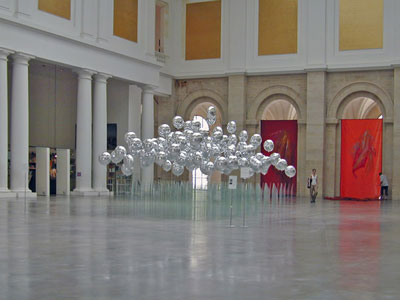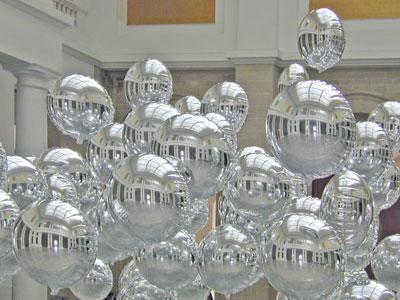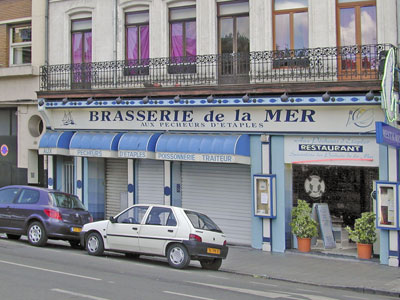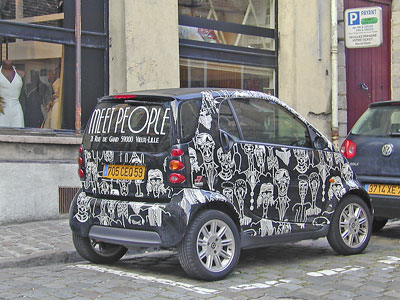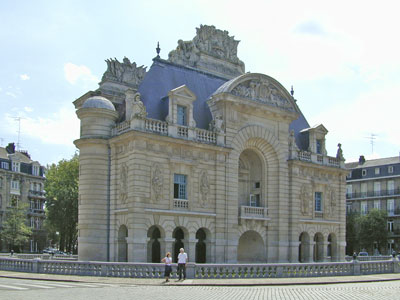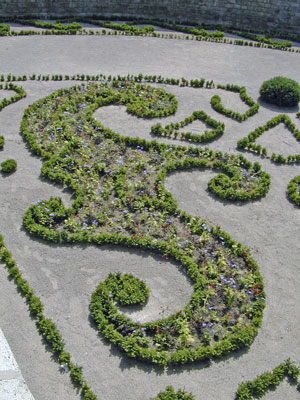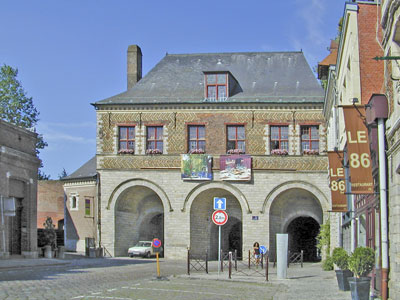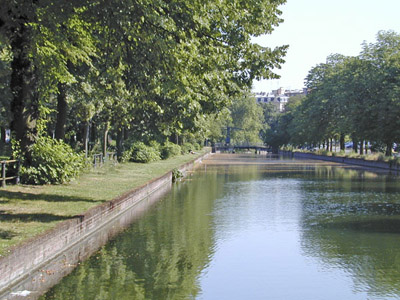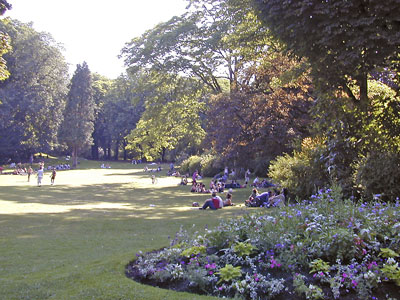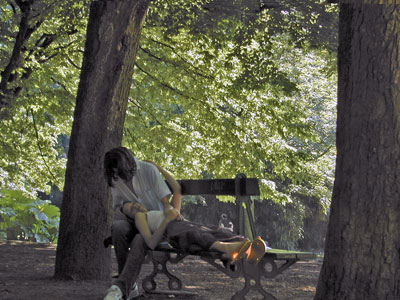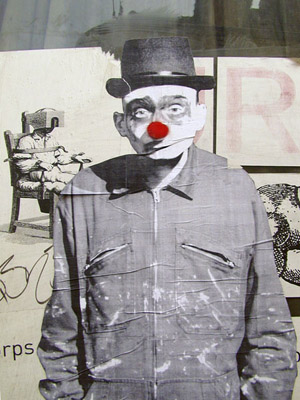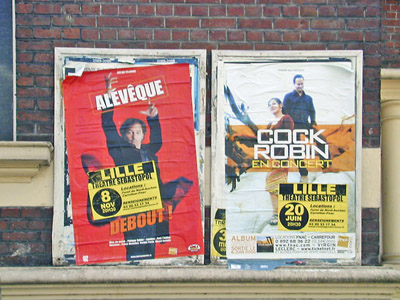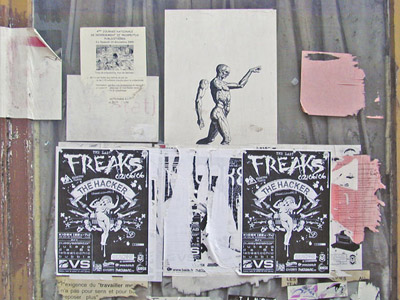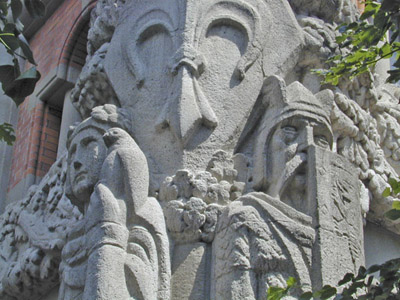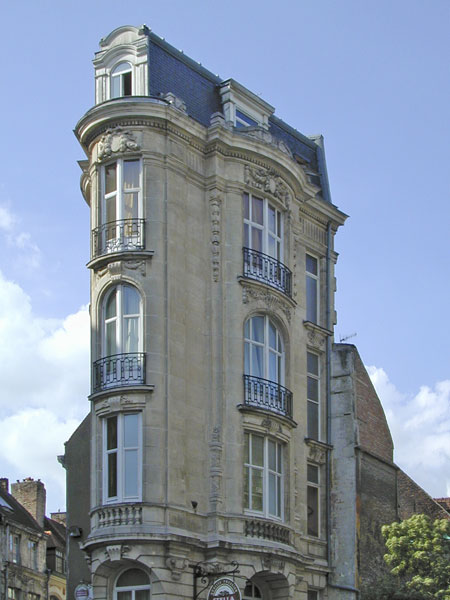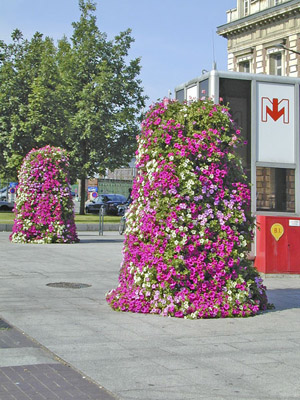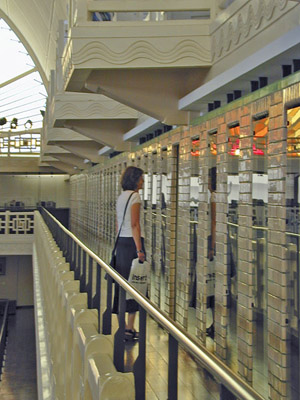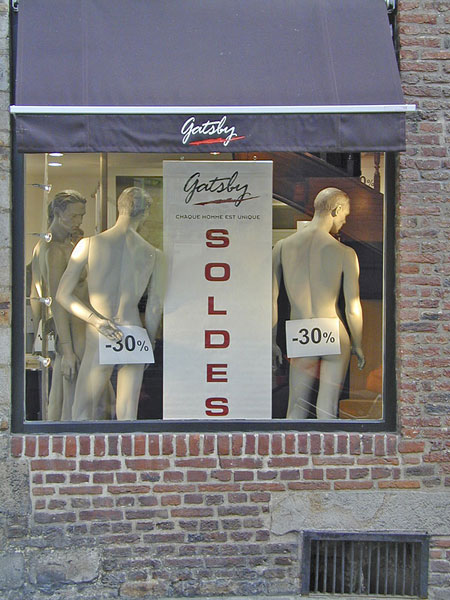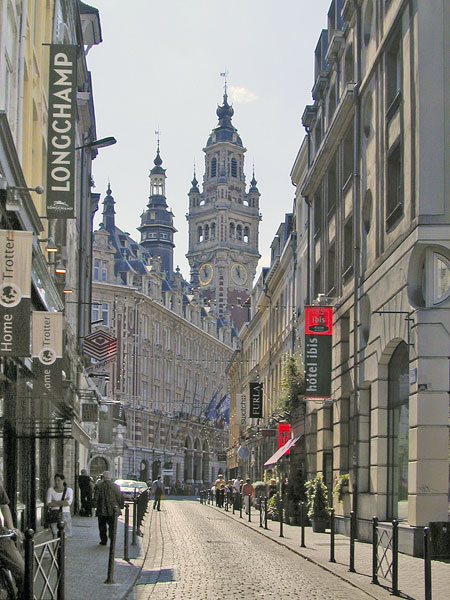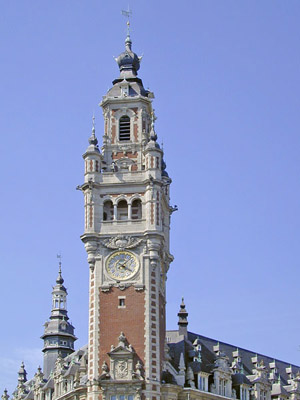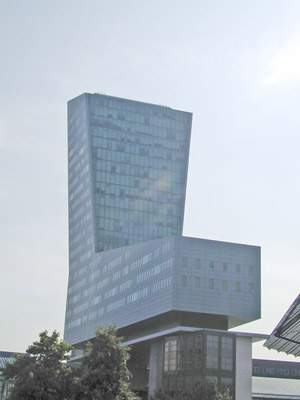I have never seen anything like these wonderful petunia pillars before. They are in Roubaix, which is 20-minutes or so away from the center of Lille on the excellent automated métro. Roubaix was an important textile manufacturing town in the 15th to 19th centuries
But the main reason to go there today is to visit La Piscine.
Originally an Art Deco swimming pool, it is now the Musée d’Art et d’Industrie. The old pool is a gallery of 19th and 20th century sculpture. The tiled edge of the pool is still visible behind the statues. The stretch of water in the middle is about three inches deep.
The old shower stalls and changing rooms have been turned into display cases for—among other things—the splendid displays of textiles and related items, and the wings that made up the municipal bath house and once contained bath tubs now house the fine arts collection.
To remind you of this wonderful building’s past, every so often, you hear a couple of minutes of taped shrieking and splashing.
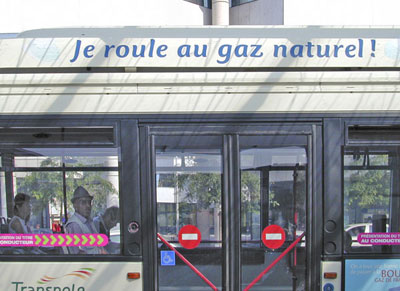



 Posted by Judith
Posted by Judith 